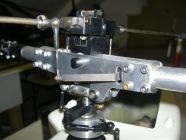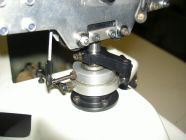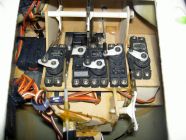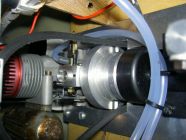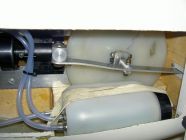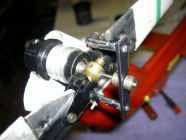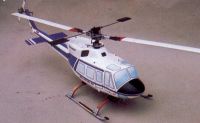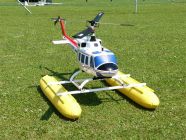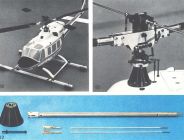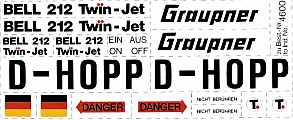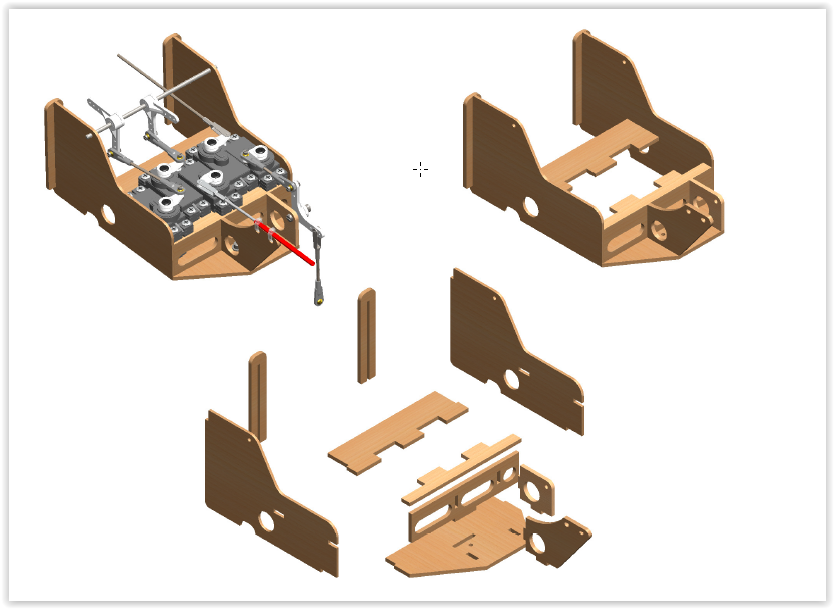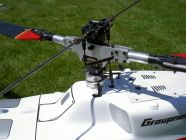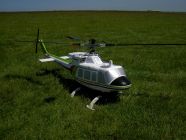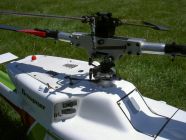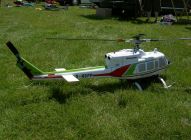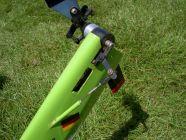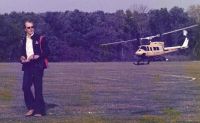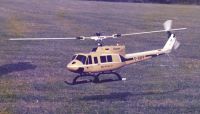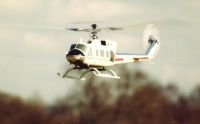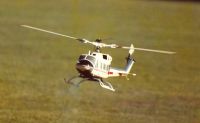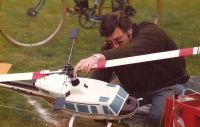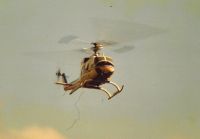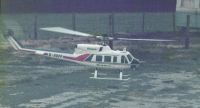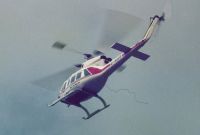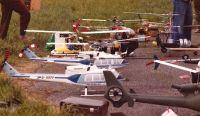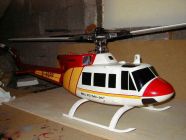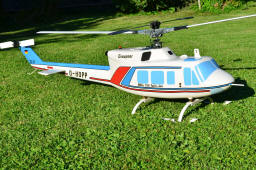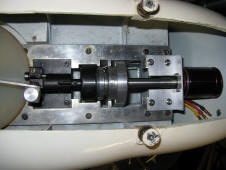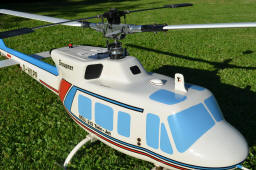Graupner Bell 212 (1973)
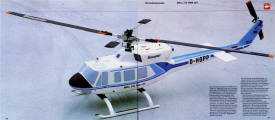 |
Specification:
|
||||||||||||||||
| Documents: | |||||||||||||||||
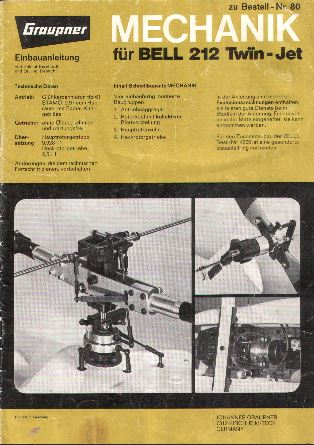 Bell 212 Mechanics manual |
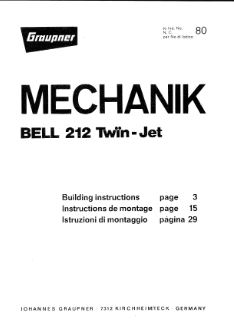 Einbauanleitung Mechanik |
|
|||||||||||||||
|
|
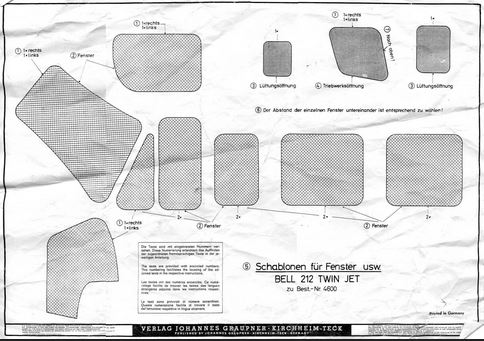 Window template |
||||||||||||||||
| Reports | |||||||||||||||||
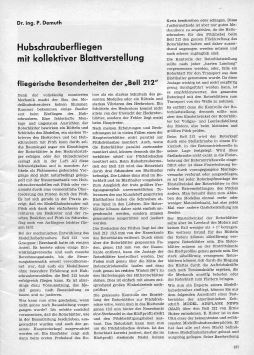 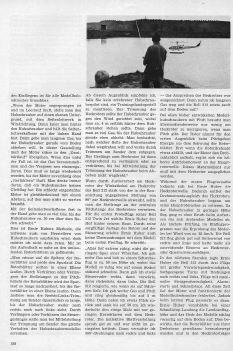 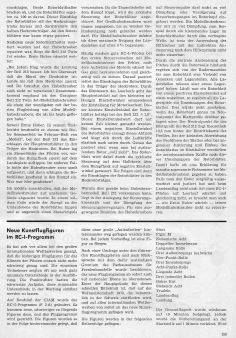 Flying with collective Pitch |
|||||||||||||||||
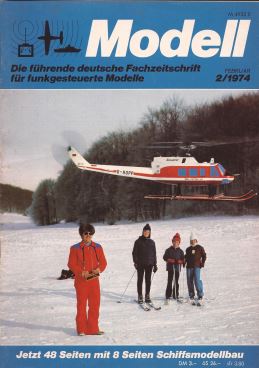 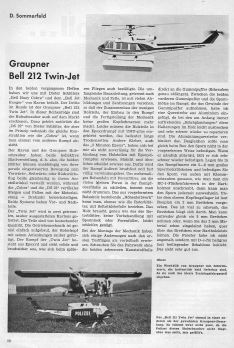 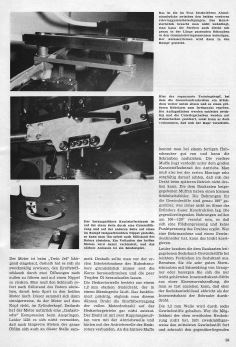 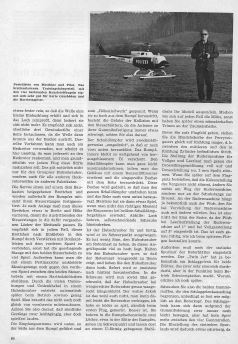 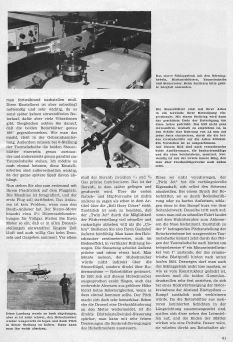 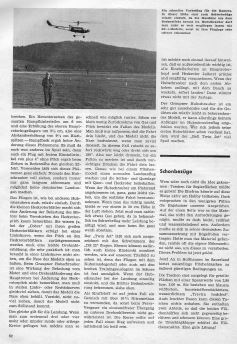 Modell Magazine Report Graupner Bell 212 |
|||||||||||||||||
Designed by H Demuth and developed in conjunction with HB engines through 1972 then introduced under the Graupner 'banner' at the Nürnberg 1973 Toy fair; being available on general sale a few months later. This helicopter had the immediate benefit of collective pitch and along with the 'Hiller' control system made circuit flying less fraught.
 HB Stamo (red head) with helicopter modifications.
HB Stamo (red head) with helicopter modifications.
The mechanics used a specially modified HB61 engine with a rear extension shaft driving the cooling fan. Helicopters were still in their infancy and so likely purchases would have no, or very little, experience in their build an operation. It was well appreciated that the building ability of the purchaser had a direct influence on the success of the final model and as this design was quite complex it would have a significant impact if not carried out exactly as per the instructions. Failure would very quickly become known and even if the majority of the 'fault' was down to the builder; as a commercial venture it would fail. In order to remove or keep to a minimum this possibility, it was decided to supply the model with the major component sections pre-built so that the remaining minor component fitting, radio fitting etc should be within the ability of a builder with 'aero' modelling experience; this did though made the 212 the most expensive helicopter at the time. Note that unlike many years later, it was not even considered that a helicopter would be built by anyone other than an experienced modeller....
The model had reasonable scale look but was let down by the non-scale landing gear; though this was significantly more practical and did help the learning process. It was also offered with extended landing gear or floats to further help the learning process. Unfortunately despite the HB-61 engine fitted to the model having an engine driven cooling fan, it would tend to overheat when set for reasonable power. This was not helped by the mechanical layout as the engine tended to 'short cycle' the air blown out over the head so the main needle had to be set on the rich side to prevent overheating. The engine was also fitted with a 'Perry' carb that could prove to be difficult to set up with the rotary idle control valve being very sensitive. To counter this a larger type heatsink head was made available and also the carb could be replaced with a 'Kavan' type which provided better throttle characteristics.
The Bell 212 was also available with a trainer head which had reduced cyclic throws and a longer main mast to reduce boom strikes. Not quite sure why this was needed as the main blades are very high above the boom anyway? Though considering the inexperienced pilot landing tail down with full back cyclic then that would do it..."Umrüstsatz"
 First UK advert Dec 73
First UK advert Dec 73 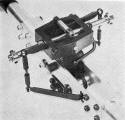
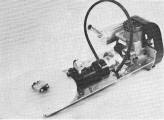 mechanics views
mechanics views
First UK build review 1973 in RCM&E by Jack Barnard, Part one - General overview / Part two - Build begins / Part Three - In-depth review of the design layout and final construction.
Like other reviews of helicopters of the time, because they were still so new the review covered three instalments and reads more like a how helicopters work manual as well as building the actual model.
Bell 212 Review - Build review From Radio modeller 1974.
Note that both of the above magazine reviews covered the build in great detail but had no flying report. However, it must be remembered that at this time there were very few 'experts' and whilst the builds were undertaken by experienced aeromodeller's; they were complete novices when dealing with helicopters.
 |
 1975 general price advert. 1975 general price advert. |
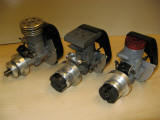
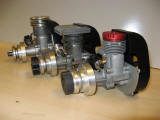 Full range of Stamo helicopter engines.
Full range of Stamo helicopter engines.
The Bell 212 was initially fitted with the HB 61 Stamo engine based on an 'aero' layout (Red head). Unfortunately the cooling layout of the helicopter meant that the engine tended to overheat if not run very rich and so in 1977 the PDP version was fitted along with a new 'rectangular' heat sink head. The PDP version was more powerful than the original engine and coupled with the larger heat sink head provided the necessary power without overheating. Note that the third engine on the left was fitted to the later Bell_222 model.
HB 61 engine - Booklet with specifications of the early engine
It is a testament to the original design and thorough pre-production testing that in all the time it was sold, only the engine was upgraded; and this more because of the general improvements in engines. By the end of the 70's one criticism that could be levelled was regarding its lack of collective pitch range and due to the head and control layout could not be improved without modifications to the head parts; mind you the flybarless head for the Bell_222 could perhaps have been fitted however, I have no information that this was ever done. The second point would be the noise as the silencer was not particularly effective and noise issues were starting to come to the fore regarding model flying.
Bell 212 Review - 2002 review by Martin Briggs general historic comments.
However, once up into the hover I was impressed with the controllability of the helicopter given that it is a 1973 head design incorporating 'Hiller' only cyclic control. I was hovering it in very gusty conditions and whilst not overly powerful it was surprisingly positive and the model could easily be held still for landing despite the turbulence. Pitch control though was another matter; very limited with only positive pitch available (Approx 0 deg to 9 deg) and mechanical limitations prevent further throw otherwise the flybar linkages 'lock' up at full movement. The collective stick therefore requires large movements compared to the rest of the controls. Tail control was also surprising powerful and could hold a side on hover and even (just) pirouette in the high wind though it was noticeably much more powerful in one direction over the other. I did used a mechanical rate gyro as frankly being a 'modern' flyer the reflex to 'kick' the tail control when moving the pitch control is long lost; it also was not equipped with a mechanical 'Revo' mixer. Looks good doing figure of eights and head high hovering with an occasional 'out and back' though lighter wind conditions would be needed for 'proper' circuit flying plus a bit more confidence in the engine; remember this is an original version - NO autorotation.........
I will agree with one comment in Martins review early up the page, exhaust noise leave's a ringing in the ears if too much close in hovering is done.
Bell 212 converted to electro

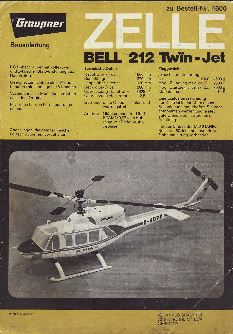
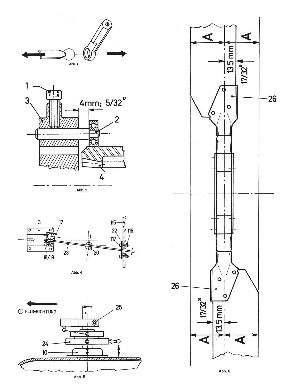
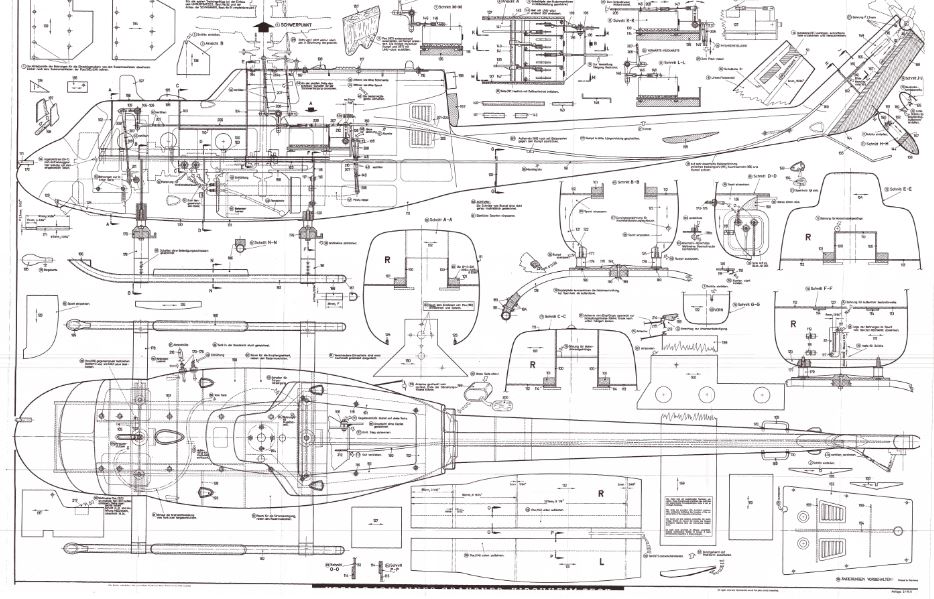
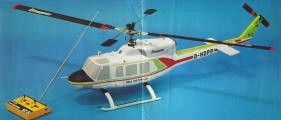



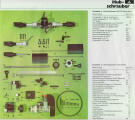
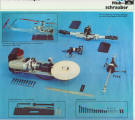
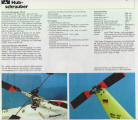
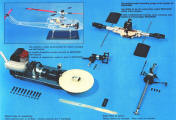

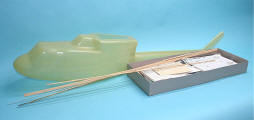



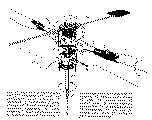
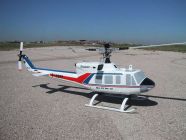
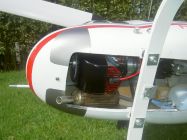
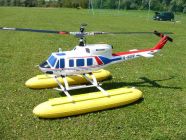
.jpg)
